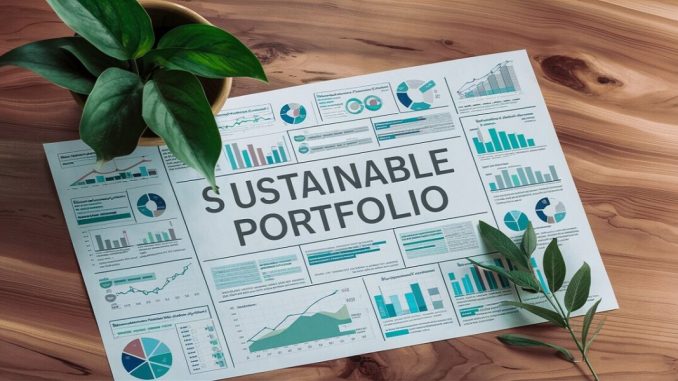
As the demand for sustainability has spread, it has gone beyond how we live and what we consume every day, but changed into a craving for environmental and socially responsible management–of all aspects, including money. Your sustainable investment portfolio is an advanced strategy as well as a statement of our ethical and environmental principles. The author guides the reader in creating their own portfolio that won’t succumb to greed and cash in irresponsibility. Understanding Sustainable Investing Sustainable investing is defined by the S.E.C. as the integration of environmental, social and governance considerations into investment decisions and financial returns. This can mean investing in companies and funds that make a positive difference in the world. For instance firms which are dedicated to reducing carbon emissions or arguing for labor rights or gender equality. Shape Your Objectives Based on your personal or institutional mission you must answer this question before getting into sustainable investment. For example: Do you want to invest in climate change, human rights or corporate governance to start with? These ethical priority areas will determine the companies or funds which you choose to invest in. If climate is a foremost cause you will likely want to put your money into green energy companies, organic agriculture or even entire funds that stay away from oil interests. Be Thoroughly Researched Research is fundamentally important for sustainable investing. Seek out enterprises or funds that are in keeping with what you value. Use ESG ratings, impact reports and sustainability indexes as tools to judge the investments you’re looking at. It’s not enough to rely upon name recognition or big claims about how environmentally-friendly them companies are–Make sure the companies you invest in have real sustainability commitments, not simply advertising ploys.
Another option is investing in a particular industry, such as mobile phones or semiconductors. This returns a profit and at the same time can achieve social goals. If environmental issues are of special concern to you, for instance, then you might buy some environmental firm stock. And you could also invest in companies that provide solutions or services to help businesses or individuals reduce their carbon footprint. Or perhaps you have been putting some stock now into forestry both environmentally sustainable but also profitable. You can even engage in venture capital, which targets startups related to social innovation (si) or clean technology.
All sustainable investors know that wherever they put their money needs to be researched. After all sophisticated investment opportunities are based on the flow of information in the first place. So a good place to begin is by checking the investment management and research functions of well known brokerage houses. You should also know something about management?e.g., its strategy and policies. Become familiar with all of these details to make sure as little as possible unknown to you which may otherwise affect your return on capital.
If you tell an experienced investor that diversification is about risk control, he will reply: “So what bullshit!” Enlarge your investment universe, the same investors will tell you. The worse the market becomes, the more opportunities it offers. A portion (20 to 33%) invested in venture capital or private equity can even out profits with stocks, bonds and EFTs. Through some tough years–and certainly now that we’ve seen liquid markets around the globe–in deciding how to allocate asset classes could make for one of the most beneficial decisions you make.
Make Your Portfolio Diverse
This may sound like common sense: variety represents strength. This holds true for sustainable investment, too. Diversify your money among many different industries, forms of asset and countries. Throw in a few stocks, bonds and ETFs that meet your environmental standards. While diversification cannot make 100% certainty, it does control risk and perhaps enhance returns.
Consider Impact Investing
One step further from sustainable investing, impact investing aims to have a definite social or environmental impact along with making money. This might be companies that manufacture clean-energy products, build affordable housing or support a health service for needy persons. Because impact investing often sets specific targets, it’s helpful to pick those in line with your goals.
Gain insight from industry insiders
If you’re new to sustainable investing,talk to a financial advisor who has done this type of work before.They can show you the truth about performance standards for ESG investments,which fits your needs and how to arrange a portfolio to meet both long-term financial objectives and short-term cash flow considerations.
Be Patient, Have a Long-Term Perspective
Sustainable investing at times calls for a longer phase of things.Although there are some sustainable investments from which you can expect a return within a year or two,others require many years for them to fully display their effects and potential. Sit back; think long-term. Remember… it takes time.
Conclusion
Sustainable investing represents a way of making your investment decisions line up with your ethical values. By understanding sustainable investing, setting your goals, researching thoroughly, diversifying and becoming involved with companies, you can create an investment portfolio that not only serves your financial purposes but also works to heal the planet. Sustainable investing is more than a trend; it is a way to build and sustain personal wealth which, responsibly managed, can bring about real positive change on a global housing scale.

Leave a Reply